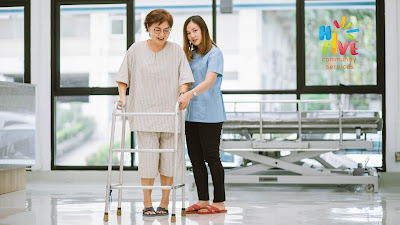The National Disability Insurance Scheme (NDIS) is a transformative initiative by the Australian government, providing invaluable resources and support to individuals with disabilities. Understanding the spectrum of equipment it covers is essential to navigate the breadth of opportunities the NDIS offers. As a leading NDIS disability service provider, our blog is designed to be your guiding light, unravelling the intricacies of the NDIS's mobility and transfer equipment offerings and providing insights on their practical use.
Understanding Mobility and Transfer Equipment
In the realm of the NDIS, mobility and transfer equipment encompass a myriad of devices meticulously crafted to enhance the daily lives, movements, and transfers of individuals with disabilities. Below, we delve into the diverse types of equipment covered:
Types of Equipment Covered
Wheelchairs and Mobility Scooters:
- Manual Wheelchairs: Tailored for individuals capable of independent movement or those assisted by a caregiver.
- Powered Wheelchairs: Suited for individuals requiring additional assistance, with customization options catering to specific needs.
- Mobility Scooters: Ideal for individuals capable of sitting upright, facilitating extended travel distances and increased community access.
Walking Aids:
- Crutches and Canes: Offering balance for individuals with limited mobility.
- Walking Frames and Rollators: These provide stability and are often equipped with features like seats and baskets.
Transfer Aids:
- Transfer Benches and Boards: Facilitating secure transitions, particularly in bathroom settings.
- Hoists and Lifts: Essential for individuals requiring assistance moving between beds, chairs, and surfaces.
- Slide Sheets: Streamlining the effort and minimizing the risk of shifting or adjusting positions.
Prosthetics and Orthotics:
- Prosthetic Limbs: Tailored to an individual's physical needs.
- Orthotic Devices: Encompassing braces and splints designed to support various physical functions.
Home Modifications:
- Ramps and Stairlifts: Customized for navigating stairs and multi-level homes.
- Handrails and Grab Bars: Thoughtfully placed to prevent falls and encourage enhanced mobility.
Vehicle Modifications:
- Wheelchair Accessible Vehicles (WAVs): Customized for seamless entry and exit.
- Adapted Driving Controls: Incorporating individualized training for the safe operation of vehicles.
Accessing and Evaluating Needs
Effectively navigating the process of accessing and evaluating mobility needs involves several critical steps:
- Professional Assessment: Conducted by occupational therapists or physiotherapists, this evaluation is pivotal in determining the most suitable equipment and ensuring alignment with the NDIS plan.
- Inclusion in the NDIS Plan: Ensuring the identified equipment is seamlessly integrated into the NDIS plan is crucial for securing adequate funding. Open discussions about mobility needs during planning meetings are strongly advised.
- Meeting the 'Reasonable and Necessary' Criteria: To secure approval, the equipment must be deemed essential for daily living and specific to the individual's disability needs, as stipulated by the NDIS.
- Provider Selection: Participants enjoy autonomy in choosing their equipment providers. Whether opting for specialists in specific equipment types or those offering a broad range, participants can choose based on their preferences and needs.
Funding and Budget Considerations
Understanding the financial aspects of acquiring mobility equipment is vital for informed decision-making:
- Understanding Your Budget: Familiarize yourself with the funds allocated in your NDIS plan for assistive technology or home modifications, facilitating informed equipment choices.
- Costs and Quotations: Seeking quotes from multiple providers ensures value for money. The NDIS may request various quotes for significant purchases to support cost-effective decision-making.
- Plan Management: The approach to plan management (self-managed, plan-managed, or NDIA-managed) significantly influences how equipment is procured or rented.
Challenges and Solutions
Addressing challenges associated with adjusting to new equipment and needing updates involves seeking ongoing support and training. Peer support groups offer not only practical advice but also moral support. Regularly reviewing needs and proactively seeking reassessments when situations change are essential for ensuring continued efficacy.
Conclusion
Mobility and transfer equipment are pillars of improved quality of life for individuals with diverse disabilities. As one of the leading NDIS disability service providers, Hi Five's trusted support coordination team guides participants through their NDIS plans and ensures they are well-informed about the types of mobility and transfer equipment covered.
Understanding the available equipment, accessing it through the NDIS, and optimizing funding and equipment options are critical to ensuring the effective fulfilment of mobility needs. Active participation in planning and staying informed about available options empowers individuals to ensure their mobility needs are met effectively. The NDIS makes life more accessible, promoting independence and an enhanced quality of life.

Comments
Post a Comment